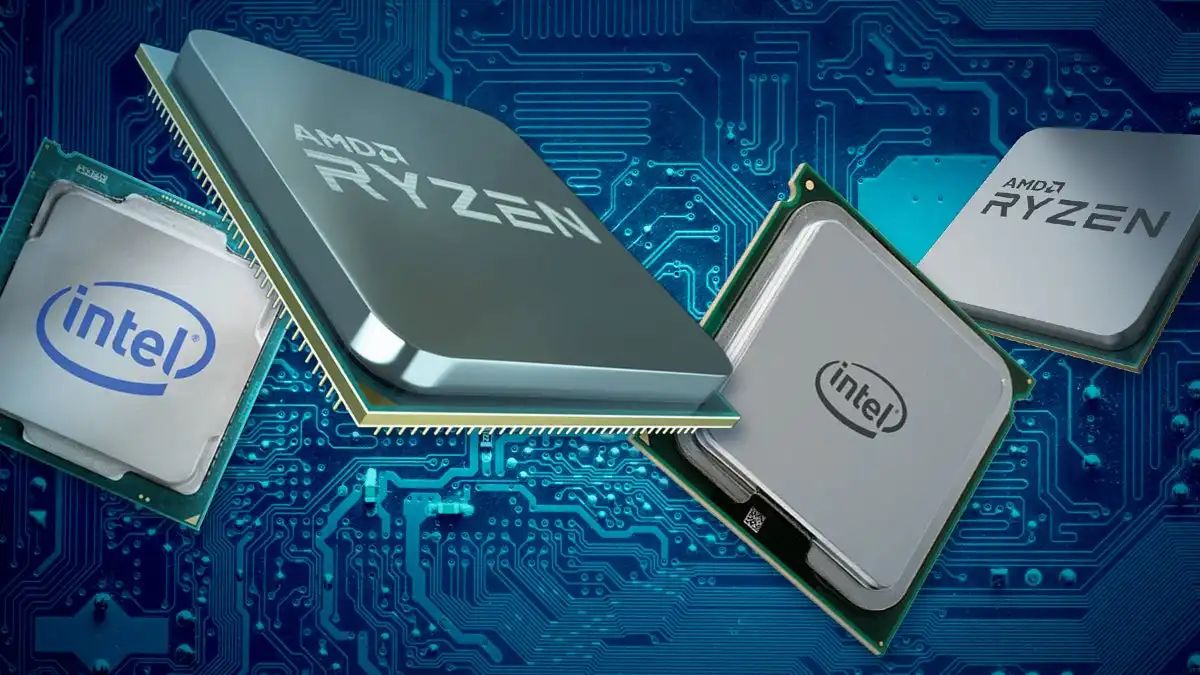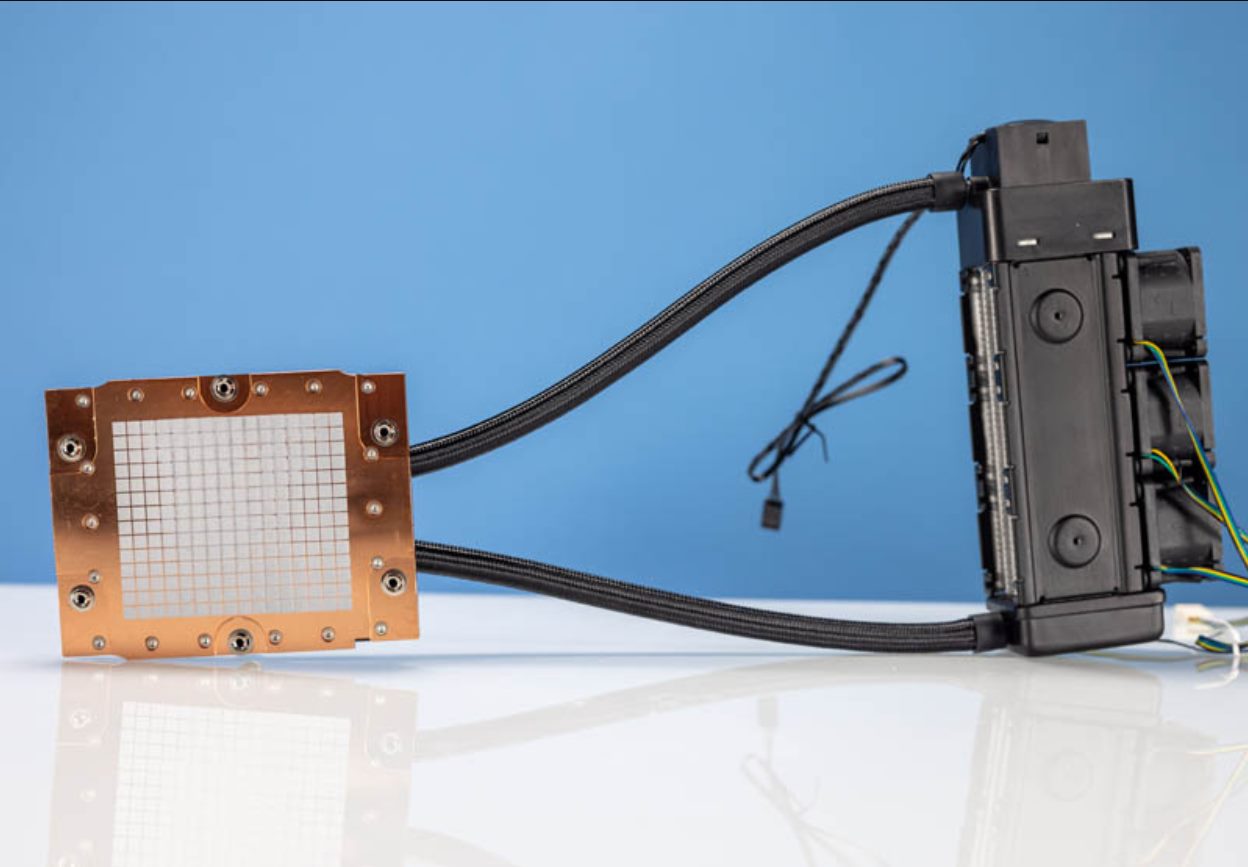Introduction
Understanding the capabilities of your CPU is essential, especially when it comes to optimizing the performance of your computer. One crucial aspect of the CPU to consider is the number of cores it has. The number of cores directly impacts the CPU’s multitasking abilities and overall processing power. In this guide, we will explore how you can determine the number of cores your CPU has.
CPUs, or central processing units, are the brains of our computers. They are responsible for executing instructions, performing calculations, and managing various tasks. Every computer, whether it’s a desktop, laptop, or even a mobile device, has a CPU.
CPU cores, on the other hand, are individual processing units within the CPU. Think of them as separate “mini-CPUs” that can independently handle different tasks simultaneously. The more cores a CPU has, the more tasks it can handle concurrently, resulting in improved multitasking and overall performance.
There are different types of CPUs available on the market, each with its own configuration of cores. For example, you may come across CPUs with a single core, dual-core, quad-core, hexa-core, octa-core, or even higher core counts. The choice of CPU depends on the specific requirements and intended usage.
Now that we understand what CPU cores are and their significance, let’s explore various methods to determine the number of cores your CPU has. Whether you are using a Windows, Mac, or Linux system, there are multiple ways to obtain this information. By knowing the exact number of cores, you can make informed decisions regarding software compatibility, system requirements, and resource allocation.
What is a CPU?
A CPU, or central processing unit, is the primary component of a computer system that carries out most of the processing tasks. It’s often referred to as the “brain” of the computer since it performs complex calculations, executes instructions, and manages the overall operation of the system.
The CPU operates in conjunction with other hardware components, such as memory and storage, to process data and execute commands. It acts as the intermediary between the user and the computer, ensuring that tasks are completed efficiently and effectively.
Inside a CPU, there are various components and circuits that work together to carry out the necessary computations. These components include the control unit, arithmetic logic unit (ALU), cache memory, and registers. The control unit manages the flow of instructions and data within the CPU, while the ALU performs arithmetic and logical operations. The cache memory and registers provide temporary storage to quickly access data that the CPU needs.
CPU performance is measured in terms of clock speed, typically represented in gigahertz (GHz). The clock speed determines the number of instructions a CPU can execute per second. Higher clock speeds result in faster processing and improved overall system performance.
In addition to clock speed, the number of cores in a CPU significantly impacts its performance. A CPU core is a separate processing unit capable of executing instructions independently. Multiple cores allow for parallel processing, enabling the CPU to handle multiple tasks simultaneously. This leads to improved multitasking capabilities and faster execution of complex operations.
Modern CPUs also often feature technologies such as hyper-threading, which allows each core to handle two independent threads simultaneously. This effectively doubles the number of available threads and improves overall performance, especially in tasks that can be split into smaller sub-tasks.
Overall, the CPU is a critical component of any computer system, enabling it to perform various tasks efficiently. Understanding its role and capabilities, particularly the number of cores, helps optimize system performance and ensure compatibility with software and applications.
What are CPU Cores?
CPU cores are individual processing units within a central processing unit (CPU) that perform tasks independently of each other. They can be thought of as separate “mini-CPUs” that work together to execute instructions and handle different tasks simultaneously.
Each CPU core has its own set of resources, including registers, caches, and execution units, allowing it to perform calculations and process data independently. Multiple cores within a CPU allow for parallel processing, improving overall system performance and multitasking capabilities.
Having multiple CPU cores is particularly beneficial in tasks that can be divided into smaller sub-tasks, such as running multiple applications simultaneously, rendering complex graphics, or encoding and decoding videos. Each core can handle a separate task, allowing for faster execution and improved efficiency.
The number of CPU cores available in a CPU can vary. Dual-core CPUs have two cores, quad-core CPUs have four cores, hexa-core CPUs have six cores, and so on. Some high-end CPUs even feature octa-core or higher core counts, which are especially useful for demanding tasks such as gaming, video editing, and scientific simulations.
One important thing to note is that the performance increase from having more CPU cores isn’t linear. While having more cores allows for better multitasking and distributed workload, it doesn’t automatically mean that every task will run significantly faster. Factors such as thread optimization, software scalability, and the specific nature of the task being performed also play a role in determining the impact of multiple cores.
In addition to the physical CPU cores, modern CPUs often feature technologies like hyper-threading and simultaneous multithreading (SMT). These technologies allow each CPU core to handle multiple threads simultaneously, effectively doubling the number of available threads and improving performance in tasks that can benefit from parallelism.
Understanding the concept of CPU cores is crucial when choosing a CPU for your specific needs. It allows you to assess the processing power and multitasking capabilities of the CPU, matching it to the requirements of the software and applications you plan to use.
In the next sections, we will explore different methods to determine the number of cores your CPU has, providing you with the necessary information to assess its capabilities and make informed decisions regarding system compatibility and resource allocation.
Different Types of CPUs and Cores
CPUs come in different types and configurations, each offering varying levels of performance and capabilities. Understanding the different types of CPUs and their corresponding core counts can help you choose the right CPU for your specific needs.
Single-Core CPUs: These CPUs have only one processing core. While they are quite rare in modern computers, they were prevalent in early computing systems. Single-core CPUs are typically limited in their multitasking capabilities and may struggle with demanding tasks that require parallel processing.
Dual-Core CPUs: Dual-core CPUs have two independent processing cores. They provide improved multitasking capabilities compared to single-core CPUs. Dual-core CPUs are ideal for general computing tasks, web browsing, and running basic applications simultaneously.
Quad-Core CPUs: Quad-core CPUs feature four independent processing cores. They offer even better multitasking capabilities and more efficient workload distribution. Quad-core CPUs are suitable for more demanding tasks such as graphic design, video editing, and gaming.
Hexa-Core CPUs: Hexa-core CPUs contain six processing cores. These CPUs are well-suited for resource-intensive tasks, including 3D modeling, complex simulations, and video rendering. Hexa-core CPUs provide a balance between performance and cost-efficiency.
Octa-Core CPUs: Octa-core CPUs have eight individual processing cores, doubling the core count of a quad-core CPU. These CPUs excel in tasks that require extensive multitasking, such as running virtual machines, professional video editing, and advanced gaming. Octa-core CPUs offer superior performance for demanding workloads.
Higher Core Counts: Some CPUs go beyond octa-core and have even higher core counts, such as 10-core, 12-core, or more. These CPUs are designed for specialized use cases and highly parallelized tasks, such as scientific simulations, data analysis, and server applications.
It’s worth noting that the performance of a CPU does not solely rely on the number of cores. Other factors, such as clock speed, cache size, and architectural optimizations, also impact the overall performance. Therefore, it’s essential to consider these factors alongside the core count when selecting a CPU.
Ultimately, the choice of CPU and core count depends on your specific requirements and the type of tasks you’ll be performing. Analyzing your workload, identifying the need for parallel processing, and considering your budget will help you determine the ideal CPU and core count for optimal performance.
Now that we have an understanding of different CPU types and core counts, let’s explore various methods to determine the number of cores your CPU has.
Ways to Determine the Number of Cores
Knowing the number of cores your CPU has is important for optimizing system performance and resource allocation. Fortunately, there are various methods to determine the number of cores your CPU possesses, regardless of whether you’re using a Windows, Mac, or Linux system. Let’s explore these methods:
Method 1: Checking the System Information
One of the easiest ways to determine the number of CPU cores is by checking the system information on your computer. In Windows, you can do this by right-clicking on the “Start” button, selecting “System,” and finding the details listed under “Processor” or “System Type.” On a Mac, you can click the Apple icon, choose “About This Mac,” and click on “System Report” to view the processor details, including the number of cores.
Method 2: Using Task Manager (Windows)
If you’re using a Windows system, you can also utilize the Task Manager to find the number of CPU cores. Simply right-click the taskbar and select “Task Manager” from the menu. In the Task Manager window, go to the “Performance” tab and select “CPU.” Here, you will find the number of logical processors, which is equivalent to the number of CPU cores.
Method 3: Using Activity Monitor (Mac)
Mac users can utilize the built-in Activity Monitor to determine the number of CPU cores. Open the Spotlight search (Command + Space) and type “Activity Monitor.” Open the Activity Monitor application and click on the “CPU” tab. Here, you will find the “Cores” column, which displays the number of CPU cores.
Method 4: Using Command Line (Windows, Mac, and Linux)
If you prefer using the command line interface, you can determine the number of CPU cores using specific commands. On Windows, open the Command Prompt by pressing Windows + R, typing “cmd,” and pressing Enter. Enter the command “wmic cpu get NumberOfCores” to display the number of CPU cores.
On a Mac or Linux system, open the Terminal application. Enter the command “cat /proc/cpuinfo | grep -i ‘core id'” to find the number of CPU cores. This command retrieves information from the “/proc/cpuinfo” file and filters it to show the core IDs.
These methods provide convenient ways to determine the number of CPU cores your system has. By utilizing these techniques, you can ensure you have the necessary information to optimize your system’s performance and make informed decisions related to software compatibility and resource allocation.
Method 1: Checking the System Information
One of the simplest ways to determine the number of CPU cores your system has is by checking the system information. This method is available on both Windows and Mac operating systems and provides an easy way to access information about your CPU.
On Windows:
To check the system information on a Windows computer, start by right-clicking on the “Start” button in the bottom-left corner of your screen. From the context menu, select “System.” This will open the System window where you can find details about your computer’s hardware and software configuration.
In the System window, look for the section labeled “Processor” or “System Type.” Here, you will find information about your CPU, including details about the number of cores it has. The number of cores may be listed explicitly, or you may see a description such as “Dual-core,” “Quad-core,” etc.
On Mac:
Checking the system information on a Mac is just as straightforward. Click on the Apple icon in the top-left corner of your screen and select “About This Mac” from the dropdown menu. This will open a window displaying information about your Mac, including the version of macOS installed.
In the “About This Mac” window, click on the “System Report” button. This will launch the System Information application, where you can find detailed information about your Mac’s hardware and software. In the System Information application, click on “Hardware” in the sidebar and then select “Processor Name” or “Processor Speed” to view information about your CPU, including the number of cores it has.
By following this method, you can quickly and easily find information about the number of CPU cores your system has. This knowledge can be helpful when making decisions regarding system upgrades, software compatibility, and resource allocation.
Method 2: Using Task Manager (Windows)
If you’re using a Windows system, another convenient method to determine the number of CPU cores is by utilizing the Task Manager. The Task Manager provides real-time information about the performance and processes running on your computer, including details about the CPU.
To access the Task Manager, right-click on the taskbar at the bottom of your screen and select “Task Manager” from the context menu. Alternatively, you can press the Ctrl + Shift + Esc keys on your keyboard to open it directly.
Once the Task Manager window opens, click on the “Performance” tab at the top. In the left-hand navigation pane, select “CPU” to view the CPU performance-related information.
On this page, you will see a visual representation of the CPU usage and other related information. Look for the section labeled “CPU Usage.” Underneath the graph, you will find a breakdown of the CPU usage by individual cores.
The number of graphs displayed represents the number of CPU cores your system has. Each graph corresponds to a separate core. For example, if your system has four CPU cores, you will see four graphs representing each core’s activity.
Alternatively, you can find the number of logical processors, which is equivalent to the number of CPU cores, in the “Logical processors” section. This information is displayed as a numerical value.
Using the Task Manager, you can easily determine the number of CPU cores your Windows system has. This information can be invaluable when troubleshooting performance issues, optimizing resource allocation, or ensuring compatibility with software that requires a specific number of cores.
Remember that CPU cores are different from logical processors. Your system may have more logical processors than physical CPU cores, especially if your CPU supports multithreading technologies like hyper-threading. Logical processors represent the number of threads your CPU can handle simultaneously.
Knowing the number of CPU cores your system has and understanding their capabilities can help you make informed decisions when it comes to software installation, system upgrades, and optimizing performance for tasks that benefit from parallel processing.
Method 3: Using Activity Monitor (Mac)
Mac users can easily determine the number of CPU cores their system has by utilizing the built-in Activity Monitor. The Activity Monitor provides real-time information about the processes, performance, and resources on your Mac, including details about the CPU.
To access the Activity Monitor, you can use the Spotlight search feature. Press Command + Space on your keyboard to open Spotlight, and then type “Activity Monitor” into the search bar. Click on the Activity Monitor application from the search results to launch it.
Once the Activity Monitor window opens, you will see a list of various tabs at the top. Click on the “CPU” tab to view the CPU-related information and performance metrics.
In the CPU section, you will find a variety of details about your CPU, including its usage, frequency, and the number of cores it has. The number of cores is displayed as a numerical value under the “Cores” column.
By referring to the “Cores” column, you can determine the exact number of CPU cores that your Mac’s processor has. This information is helpful for understanding the processing power and multitasking capabilities of your system.
Additionally, Activity Monitor provides graphs and visual representations of CPU activity, utilization, and other performance metrics. These can be useful for monitoring the overall health and performance of your Mac.
Knowing the number of CPU cores your Mac has is important for making informed decisions when it comes to resource allocation, software optimization, and system upgrades. It allows you to assess the capabilities of your CPU and ensure compatibility with applications that rely on a specific number of cores.
Whether you’re a casual user looking to run multiple apps simultaneously or a professional handling resource-intensive tasks such as video editing or software development, understanding the number of CPU cores will enable you to maximize the performance and efficiency of your Mac.
By utilizing the Activity Monitor, Mac users can conveniently determine the number of CPU cores their system has without the need for third-party software or complex configurations. This information empowers you to optimize your workflow, enhance productivity, and ensure smooth multitasking on your Mac.
Method 4: Using Command Line (Windows, Mac, and Linux)
For those who prefer using the command line interface, determining the number of CPU cores can be done using specific commands. This method works on Windows, Mac, and Linux systems, providing a versatile way to access CPU core information regardless of your operating system.
On Windows:
To use the command line on a Windows system, start by opening the Command Prompt. You can do this by pressing the Windows key + R on your keyboard, typing “cmd” in the “Run” dialog, and then hitting Enter.
Once the Command Prompt window is open, enter the following command:
wmic cpu get NumberOfCores
Press Enter to execute the command. This will display the number of CPU cores in your Windows system. The value will be displayed under the “NumberOfCores” column.
On Mac and Linux:
On Mac and Linux systems, you can determine the number of CPU cores using the command line as well. To get started, open the Terminal application.
In the Terminal window, enter the following command:
cat /proc/cpuinfo | grep -i 'core id'
Press Enter to execute the command. This command retrieves information from the “/proc/cpuinfo” file and filters it to show the core IDs of the CPU cores present in your system. The number of lines returned corresponds to the number of CPU cores.
By using the command line, you can quickly ascertain the number of CPU cores your system has. This information can be useful for optimizing resource allocation, troubleshooting performance issues, and ensuring compatibility with software that requires a specific number of cores.
Remember that the command line interface provides a powerful way to access system information and execute various tasks efficiently. It offers a versatile method for retrieving CPU core information that is consistent across different operating systems.
Whether you’re a Windows user looking to take advantage of the Command Prompt or a Mac or Linux user comfortable with the Terminal, using the command line is a reliable and accessible way to determine the number of CPU cores in your system.
Conclusion
Determining the number of CPU cores your system has is crucial for understanding its processing power, multitasking capabilities, and compatibility with resource-intensive software. Whether you’re a computer enthusiast, a professional running demanding applications, or a casual user interested in optimizing system performance, knowing the number of CPU cores is essential.
In this guide, we explored various methods to determine the number of CPU cores. By checking the system information, using the Task Manager on Windows, employing the Activity Monitor on Mac, or utilizing the command line interface on Windows, Mac, and Linux systems, you can easily access the information about the number of CPU cores your system possesses.
Understanding the concept of CPU cores and their significance allows you to make informed decisions regarding system upgrades, software installation, and resource allocation. CPUs with multiple cores offer improved multitasking capabilities, faster processing, and better performance in parallelizable tasks.
By utilizing the methods discussed in this guide, you can access the necessary information about your CPU and ensure that your system is optimized for the tasks you need to perform. This knowledge will empower you to make informed decisions regarding software compatibility, system requirements, and resource allocation, leading to a smoother computing experience and improved efficiency.
Take the time to explore the methods provided in this guide and determine the number of CPU cores your system has. Armed with this knowledge, you can make the most of your system’s capabilities and enhance your overall computing experience.

























